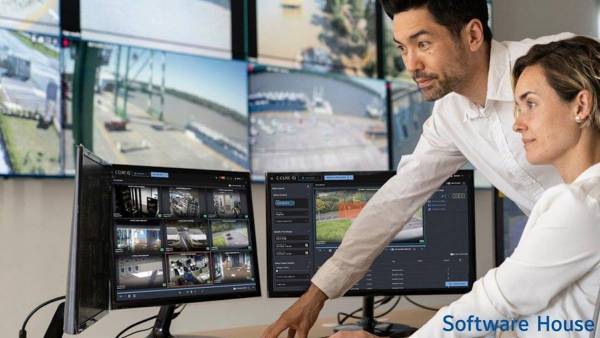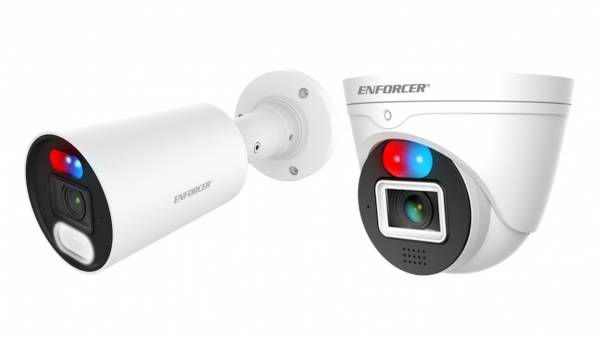 In the last edition we began to make an illustration on how to calculate the capacity of the Hard Drive of a Digital Video Recorder, today I bring you the second installment, in which I seek to elucidate some points.
In the last edition we began to make an illustration on how to calculate the capacity of the Hard Drive of a Digital Video Recorder, today I bring you the second installment, in which I seek to elucidate some points.
by Germán Alexis Cortés*
As said in the previous installment, many times in the electronic security industry, it happens that we sell CCTV systems without doing the proper analysis. In fact, only a few people know exactly what calculations should be made and I believe that very few of them actually do. The rest are content to choose a brand of equipment and check which model offers a lower price.
So it is very useful that we analyze in detail the other aspects that influence the calculation, in this second installment we will include five other points that must be taken into account:
4. Compression Algorithm
The efficiency of the program or standard of image compression used by each video recorder will depend on the average size of each image, given in Kilo Bytes. There are popular and widely known algorithms such as MJPEG, MPEG2, MPEG4, H263, H264, MPEG4-L10, WAVELET, and a large number of private algorithms that in one way or another are based on the combination of the above, but with some kind of improvement, which allows to offer a smaller number of bytes per stored frame.
Complex mathematical models and sophisticated analysis of moving images make day after day the sizes smaller and therefore the savings in hard disk and bandwidth are important. You can't tell which one is better than another, because each has strengths and weaknesses. However for now, the leadership goes to MPEG4-L10 which is also known as H.264.
It is based on compression within each frame, and in turn, between frames. It divides the scene into virtual objects, in such a way that they are compressed depending on their nature with different algorithms and additionally only the changing objects are recorded. To date it is the most efficient of open type.
I repeat that there are some algorithms that improve these capabilities and can be better, however they are owned by some brands, and this is excellent as long as the brand uses the algorithm to store the images internally, but when it decides to share them, it delivers them using an open algorithm. So let's notice that there are times when the compression level is high at the hard drive level, but it is lower at the bandwidth level, because different algorithms are used.
5. Image Quality
It is the ability that each compression algorithm has to increase its compression level. However, the higher the compression, the more information can be lost and that translates into a lower quality in the image. Therefore, again I write my suggestion to always shoot at the best possible quality, especially in scenes of high importance.
The manufacturers of video recorders indicate in the manuals the average size in KiloBytes of an image, depending on the quality chosen and the algorithm used. Be careful, because you can make a high investment, buying a DVR/NVR with very sophisticated algorithms, but if you decide to record in low quality, everything will have been lost. This is a very common mistake in the guild and is due to the lack of knowledge of the engineers and technicians who adjust the parameters of the video recorder.
6. Type of complexity in each image
It refers to whether the images are simple (for example a scene with a white wall in the background) or if they are images full of details (for example the same scene, but with a window that shows a wooded and multicolored area in the background).
It is obvious that the more complexity the image presents, the more difficult it will be to compress for any algorithm. Therefore those small Bytes of less or more in each image, ultimately make a difference that we can not despise. Algorithms are sometimes very efficient (they compress a lot) for certain scenes, but lousy for others. That is why a DVR / NVR that analyzes each scene and uses a combination of algorithms, will always be better, however we must understand that they definitely have a higher value.
7. Average size of each stored image
Then points 2, 4, 5 and 6 come together to finally give an average size per frame stored in each scene. Traditionally an average is taken per frame, to make the calculations simpler and not depend on each scene. This is the important value to take into account when making the final calculations on the capacity of the necessary hard drive.
This value is observed in the tables that the different manufacturers deliver and depends on the resolution, complexity of the image, level of compression and algorithm used. Some manufacturers average all alternatives and deliver a single overall average value. In this case, special care must be taken when making the calculations, as the margin of error can be significant. In this case, the scene simulators inside the DVR calculators work very well.
If your brand does not own this tool, my recommendation is to take into account points 2, 4, 5 and 6 for each camera. Do not use one brand's calculator to calculate the hard drive on another brand's DVR. The differences can be very significant. Again that is why I rely more on an Excel sheet where we ourselves responsibly and in detail take into account all the aspects mentioned. Obviously for this it is important to make the inspection visit to the site (Site Survey), which so many people ignore to save costs and in the end see how the hidden costs of each site disappear the usefulness of the project.
8. Daily recording time
A very common mistake is to pretend that the camera sees the same scene at all hours of the day, so my suggestion is to carefully analyze the way in which you can SEGMENT the day for each camera, depending on the importance of the scene you are seeing at each moment of the day.
In this way we can deduce that some cameras are more important at certain times and other units are key at other times. This is only achieved by visiting the site and observing the actual operation or if the project has not been built, resembling it to some known site. It is therefore very important to dialogue with the end user, ask the right questions and get to know in the best way the complete operation of each site to be monitored. In this case the calculations must be made for each camera, for segment of the day and for each recording mode.
Obviously this generates a lot of confusion for the seller and almost never does. It is important that the pre-sales engineer brings out his most important skills as a mathematician and in a methodical and orderly way takes into account all the variations, so that the calculation is close to reality.
If you are an end user, please ask your technology provider for the calculations you made of the hard drive. I assure you that more than half of your potential suppliers, especially those with very low prices, invent the DD's capability and cannot support you in detail where it came from. The segmentation in the basic calculations, is an infallible proof of professionalism, when I have had to select proposals in a tender.
Wait in the next edition of SECURITY SALES, the third and final part of this article.
* Germán Alexis Cortés H. is a Colombian Electronic Engineer, with a postgraduate degree in Engineering Management Systems. Consultant of the National Institute of Standards and Technology – NIST, in Electronic Security and Building Automation. CCP of ASIS, and CISSP of ISC2. He has over 20 years of experience in the electronic security industry. Renowned lecturer and university professor on high-tech issues at the Latino level. He has been a director of several companies in the sector and is currently a partner and directs Insetrón Ltda, an engineering and technical consulting company in electronic network projects for security, communications and automation. He has successfully participated in more than 150 projects at the Latino level.
























Leave your comment